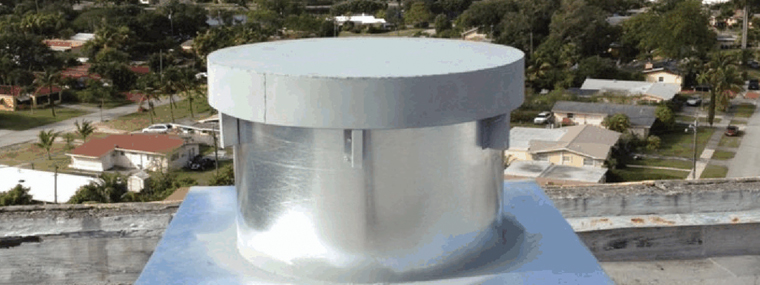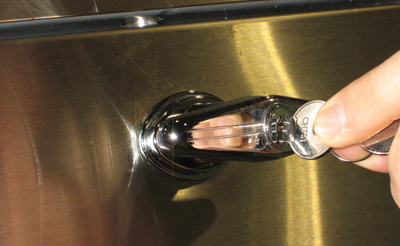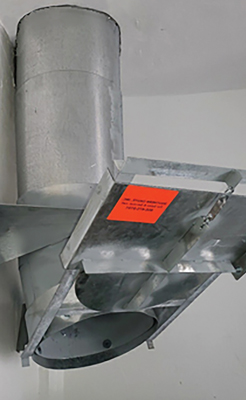
Pamper Your Trash Chute in 2024
By Joanna Ribner / Published January 2024

A new year comes to us sparkling and fresh, full of possibilities and well-intentioned resolutions. For most of us, we will concentrate on our families, our health, and our finances—anything that affects our “bubble” that we live in.
For the diligent few who step up and become board members of their condominiums or HOAs and for their management and maintenance teams, the outlook is much broader. They must concentrate on the well-being of many other people and properties, which can sometimes be overwhelming.
As Florida continues to deal with increasing condominium regulation and insurance costs, it seems as though locusts are attacking your budget, clamoring for every cent you can squeeze out of it. Amid all of this, one truth holds firm: being proactive with equipment maintenance can be affordable and can save big bucks in the future!
One item that has long been ignored, except by the savviest managers and boards, is the trash chute system in your building. The steel tube in the middle of your building is often neglected until there is a blockage, unpleasant odors, or a collapse, which forces your residents to carry their trash bags and Amazon boxes downstairs to the dumpster! Then you realize how much you depend on this silent, unassuming fixture.
Replacing a trash chute, or even a few floors of chute, is a major construction project filled with dust, noise, inconvenience, permits, and inspectors. The good news is, with some smart planning you can extend the life of your chute. So start the new year by showing your chute some tender loving care (TLC)!
Your neighbors probably have no idea that the trash chute is governed by the fire code and is an important element in the building’s safety plan. When they see a line item for chute cleaning and maintenance, they may question why it is necessary. The simple explanation is that the chute is structurally a chimney, with openings on every floor; and just like a chimney, it will pull smoke and flames upwards.
Trash chute fires are actually very common. It is amazing how many people throw lit cigarettes down the trash chute or dispose of a candle! Think of how many flammable items can be in your trash bag—butter wrappers, margarine tubs, and cotton balls with nail polish remover on them. The list of everyday items that are flammable is endless. Then consider where the typical condominium dumpster is. Nearly every dumpster or compactor is in or near a parking garage (gasoline). Trash rooms are typically storage areas for many items, including paint cans, cleaning chemicals, and many other potentially flammable items. So something as small as a cigarette butt can cause a tragic conflagration.
This is why the chute is under the fire code and why you can expect the fire marshal to do an annual inspection and issue citations when there are code violations.
At the very bottom of the chute, there is a fire damper door, which is referred to as a guillotine or discharge door. This door must be equipped with a lead link and must be able to slide closed in case of a fire in the trash room. Then the chute will be sealed off from rising smoke and flames.
Recently, many jurisdictions began requiring that the link be changed annually, and that the date it was changed must be on the link. Links can also be knocked off or fall off, especially when the maintenance team opens and closes the door when trash containers are being changed out. A dated link must be a part of your chute maintenance.
On each residential floor the hopper door, which is the door the residents use to dispose of their garbage, must self-close and self-latch. The doors must also be UL-tested and -rated, B-label doors. If the doors meet these code requirements, they will withstand a trash chute fire for up to 1.5 hours. This is a barrier against smoke and flames penetrating onto residential floors, allowing for evacuation. On a more mundane, everyday application, doors that close and latch properly contain fruit flies, roaches, and odors, keeping them in the chute.
We constantly hear complaints from managers and residents that the chute doors do not open far enough and are too hard to pull open (this especially from our more senior residents). Another part of the code deals with this. Doors can only open at 45 degrees. This is to prevent a small child from climbing into a chute, not to mention an inebriated college student or an adult who has dropped their precious phone in the chute—both incidents which happened in the last year. It also helps to prevent damage and blockages. Most chutes are only between 24-inches to 30-inches in diameter. Crushing up a pizza box or Styrofoam to dispose of it in the chute is a major cause of blockages. In theory, only a regular-sized bag of household garbage can fit through the door. In practice, the closers can be broken by a hard tug or a determined “stuffer,” and we replace hundreds of them each year. Why is the door so stiff to open? Because the hydraulic closer is a 50lb pull weight. Again, for safety reasons, the door should close slowly enough to allow you to withdraw your hand. Then it needs the weight for a final snap to close. If a door is slamming shut or falling open to 90 degrees, it will not pass a code inspection.
The final part of the chute is the vent cap on the roof. This is designed to pull warm, noxious air out of the chute, and it also protects the chute from birds and debris falling into it.
Proactive maintenance means an annual, professional chute inspection and cleaning. The chute should be cleaned with non-corrosive degreasers and extremely hot water, which can only be done by a trash chute cleaning company. The service should include cleaning and lubricating all parts of the doors and service of the fire damper door along with the new fusible lead link. Not only will this reduce odors, but it will prolong the life of the doors and the chute itself.
Depending on the building, professional chute cleaning can range from $50 to $100 per floor. Compare that to replacing a door, which is $450 to $600 each. Or how about replacing floors of chute at upwards of $5000 per floor? You can see that regular maintenance is a very affordable option.
Trash chutes are also equipped with a wash down system and a fire sprinkler system, which is also inspected annually and must meet fire code. You should have an annual fire sprinkler inspection to make sure no heads are missing in the chute and to check for leaks. A slow leak can rust out sections of the chute, causing major damage. This needs to be done by your fire sprinkler contractor.
The wash down is checked and repaired by a plumber. Again, an annual inspection to detect leaks can save a lot of money and inconvenience in the long run. The only thing that we can say about the wash down is “do not use it!” Tepid water dribbling down the chute will not clean it, will not cut any grease, and will rust the chute with repeated use.
So give your chute a spa day in 2024 and commit to annual proactive chute maintenance!
Joanna Ribner
Owner, Southern Chute
Southern Chute Inc. started operations in September of 2001 and now has offices in Fort Lauderdale and Ft. Myers. We are state-licensed sheet metal contractors, specializing in replacement of chute systems in existing buildings, and we clean dryer risers. A family-owned business run by Joanna Ribner and her brother-in-law, Sandy Ribner, we are proud of the long tenure of our staff and the loyalty of our customers. For true excellence, call the industry leader and innovator! For more information on Southern Chute, call 866-475-9191 or visit www.SouthernChute.com.







